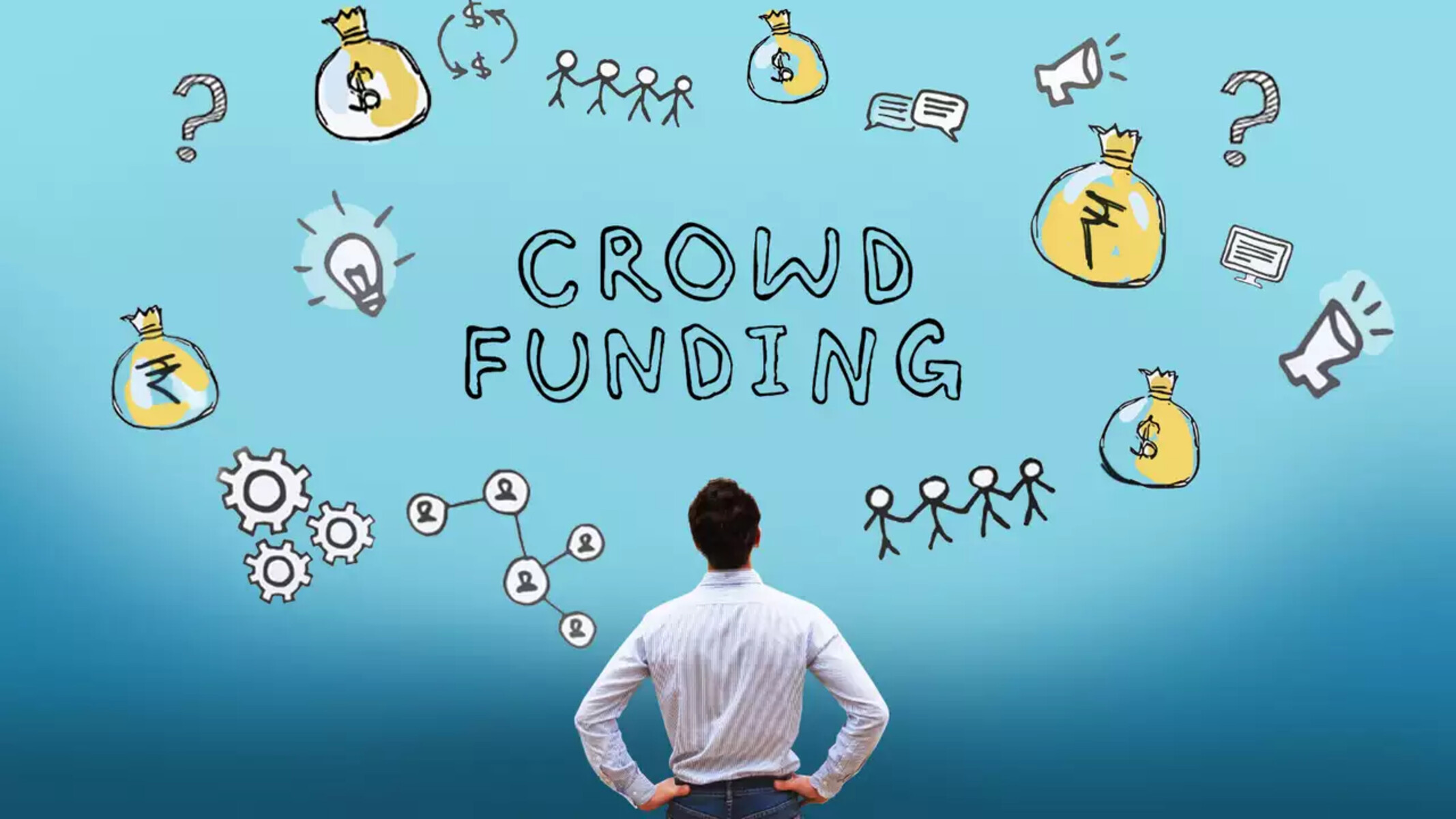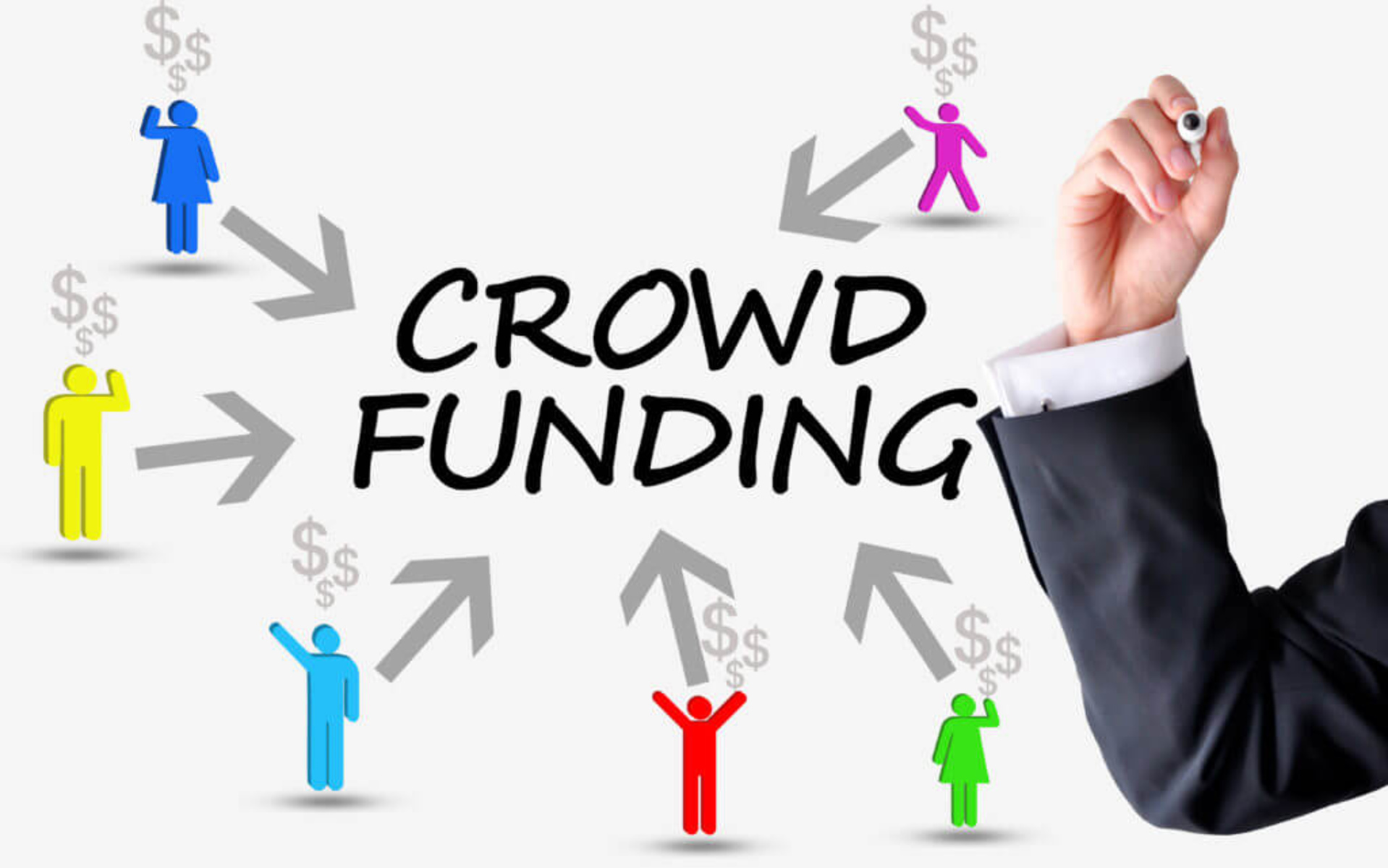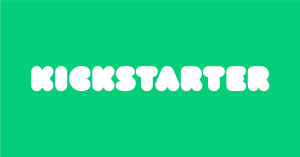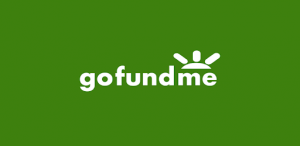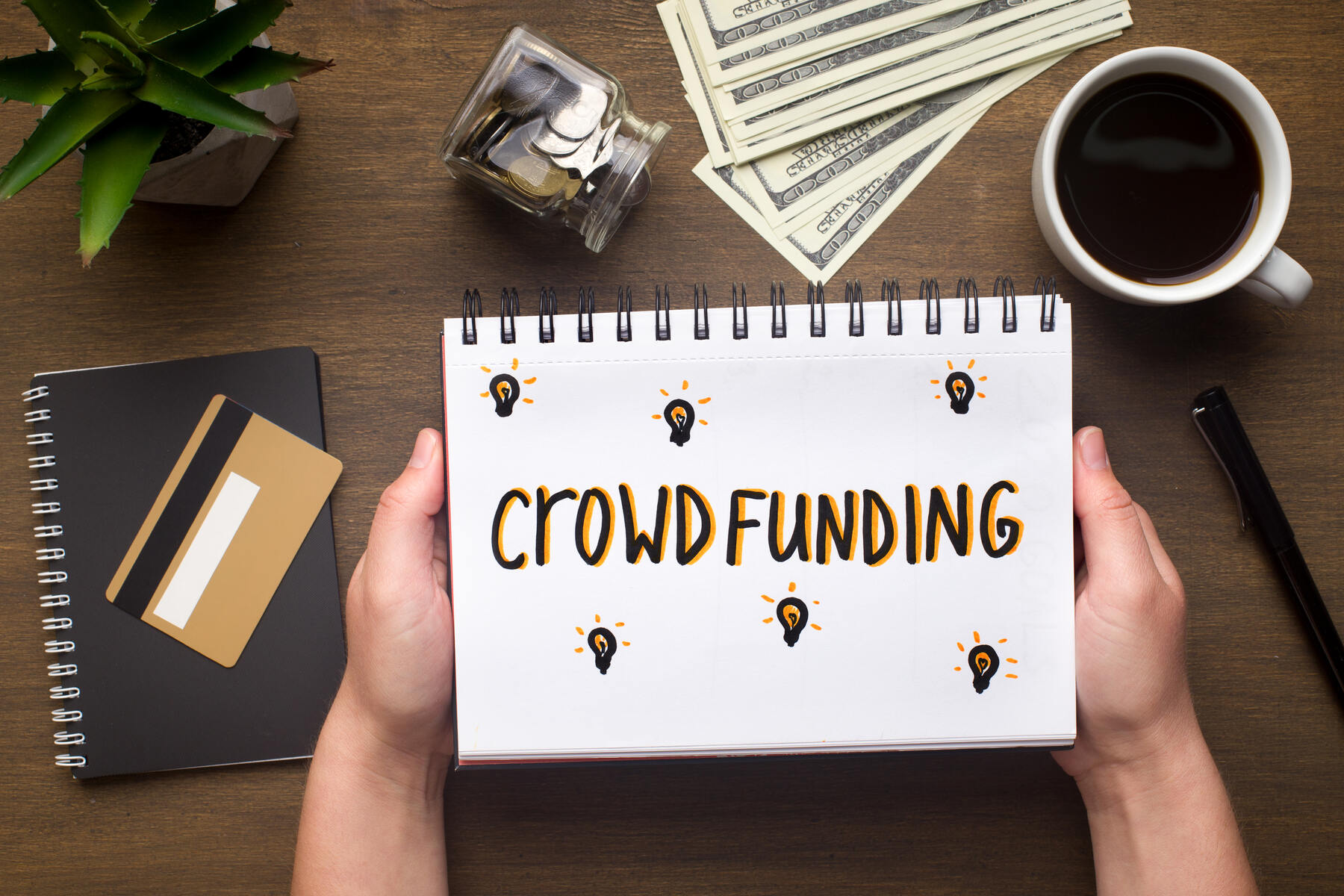Introduction
Crowdfunding has become an increasingly popular method for individuals, businesses, and organizations to raise funds for various projects and causes. It offers a platform to connect with a wide audience and tap into their willingness to support endeavors they believe in. With several crowdfunding platforms available, such as GoFundMe, Indiegogo, and Kickstarter, it can be challenging to choose the right one for your specific fundraising needs.
In this article, we will explore the differences between GoFundMe, Indiegogo, and Kickstarter, and provide insights on how to navigate and choose the platform that best aligns with your funding objectives.
But first, let’s understand what crowdfunding is all about. Crowdfunding is essentially a concept where a large number of individuals contribute relatively small amounts of money towards a specific cause or project. It harnesses the power of the collective, allowing people to come together and make meaningful contributions that can collectively have a significant impact.
These crowdfunding platforms serve as intermediaries, providing a virtual space where fundraisers can create campaigns and share their stories, while potential donors can discover and contribute to the causes that resonate with them.
Now, let’s delve into the distinctions between GoFundMe, Indiegogo, and Kickstarter, and how to determine which one is the right fit for your crowdfunding venture.
What is crowdfunding?
Crowdfunding is a modern approach to fundraising that allows individuals or groups to raise money for a project or cause through small contributions from a large number of people, typically via the internet. It provides a platform for individuals to share their ideas and receive financial support from a global community that believes in their vision.
Traditional fundraising methods often rely on a few large donations from wealthy individuals, organizations, or grants. Crowdfunding, on the other hand, opens up the possibility for anyone to contribute, regardless of their financial capacity. It democratizes the process by allowing individuals to make small, affordable donations that collectively add up to significant funding.
One of the key factors that distinguishes crowdfunding from traditional fundraising is the emphasis on storytelling. Campaign creators have the opportunity to share their personal journeys, highlight the purpose and impact of their projects, and connect with potential donors on an emotional level.
Through compelling narratives, campaigners can create a sense of community and foster a connection between themselves and their supporters. This storytelling element is essential in crowdfunding as it helps build trust, credibility, and transparency, which are crucial factors in encouraging individuals to contribute to a cause.
Furthermore, crowdfunding offers a diverse range of projects and causes to support. From social initiatives, creative endeavors, and business ventures to personal emergencies, medical expenses, and community projects, there is a crowdfunding platform for almost every type of fundraising need. It allows individuals to mobilize resources and support for causes they care about, making a positive impact on society.
Overall, crowdfunding has revolutionized the way people raise funds. It has made fundraising more accessible, inclusive, and democratic, enabling individuals to harness the power of the crowd and turn their dreams into reality.
Understanding the differences between GoFundMe, Indiegogo, and Kickstarter
While all three platforms – GoFundMe, Indiegogo, and Kickstarter – fall under the umbrella of crowdfunding, they have distinct features and target different types of projects. Understanding these differences is critical in selecting the right platform for your fundraising needs.
GoFundMe: GoFundMe is primarily focused on personal fundraising and charitable causes. It is ideal for individuals seeking financial support for personal emergencies, medical bills, educational expenses, or community-based projects. The platform is known for its ease of use, allowing users to quickly create and share their campaigns without any requirement of a specific goal or deadline. There are no penalties for not reaching the fundraising target, and funds can be withdrawn as they are received. GoFundMe operates on a donation-based model, where contributors receive no actual tangible rewards or equity in return for their donations.
Indiegogo: Indiegogo is known for its flexibility and diversity of campaigns. It caters to both personal and entrepreneurial projects, including creative endeavors, tech innovations, and social causes. Indiegogo offers two distinct crowdfunding options: “Fixed Funding” and “Flexible Funding”. With Fixed Funding, creators must reach their fundraising goal within a specified time frame; otherwise, all funds are returned to the backers. On the other hand, Flexible Funding allows campaign creators to keep the funds they raise, regardless of whether they attain their goal or not. Indiegogo offers additional features, such as the option to offer perks or rewards to backers and the ability to run both all-or-nothing and keep-it-all campaigns.
Kickstarter: Kickstarter predominantly focuses on creative and innovative projects. It is best suited for artists, inventors, game developers, filmmakers, and designers seeking funding for their ventures. Unlike GoFundMe and Indiegogo, Kickstarter operates on an “all-or-nothing” model, where creators must reach their predetermined funding goal within a set period; otherwise, no funds are collected. Kickstarter campaigns often offer rewards or unique experiences to backers, creating a sense of exclusivity that motivates people to contribute. The platform emphasizes storytelling, showcasing the creative process, and promoting collaboration between creators and their supporters. Additionally, Kickstarter strictly prohibits fundraising for charitable causes, personal emergencies, or ongoing business expenses.
While GoFundMe, Indiegogo, and Kickstarter all provide opportunities for crowdfunding, each platform has its own strengths and target audience. It is essential to evaluate your specific project type, funding goals, and campaign requirements to select the platform that aligns with your objectives and maximizes your chances of success.
Assessing your funding needs
Before deciding on a crowdfunding platform, it is crucial to assess your funding needs and determine the specific requirements of your project. Understanding your financial goals and the nature of your campaign will help you choose the most suitable platform that aligns with your objectives. Here are some key factors to consider:
1. Funding Goal: Determine the amount of money you need to raise for your project. Be realistic and consider all the expenses associated with it, including production, marketing, shipping, or any other relevant costs. Different platforms have varying thresholds for minimum and maximum fundraising targets, so ensure the platform you choose can accommodate your funding goal.
2. Project Type: Identify the category or field your project falls under. Is it a personal endeavor, a social cause, a creative project, or a business venture? Different platforms have different strengths and cater to specific project types, so choose the one that specializes in supporting projects like yours.
3. Platform Fees: Understand the fee structure of each platform. Most crowdfunding platforms charge a percentage fee on the total funds raised as well as payment processing fees. Consider your budget and the impact these fees may have on your final amount received.
4. Project Timeline: Determine the duration of your campaign. How long will you run your fundraising efforts? Some platforms have restrictions on campaign lengths, while others offer more flexibility. Consider the optimal duration that allows you to reach your target audience and generate momentum without dragging on too long.
5. Rewards or Perks: Decide if you want to offer rewards or perks to your backers. Offering incentives can motivate people to contribute and increase your chances of reaching your funding goal. Evaluate whether the platform you’re considering supports the ability to offer rewards, and if so, analyze the impact it may have on your project’s budget and logistics.
6. Target Audience: Understand who your target audience or potential backers might be. Different platforms attract different demographics and types of donors. Consider the platform’s user base, geographic reach, and the type of projects that resonate with its community to ensure your project aligns with the platform’s audience.
7. Additional Features: Take into account any additional features or tools that the platform offers. Some platforms provide built-in marketing and promotional tools to help boost your campaign’s visibility, whereas others may have integrations with third-party services to enhance your fundraising efforts. Analyze these features and determine which ones align with your campaign strategy.
By carefully assessing these funding needs, you can narrow down your options and select the crowdfunding platform that best suits your specific project requirements. Remember, choosing the right platform is a crucial step towards a successful crowdfunding campaign.
GoFundMe: When to choose it and why
GoFundMe is a popular crowdfunding platform that specializes in personal fundraising and charitable causes. Here are some circumstances in which GoFundMe may be the ideal choice for your fundraising campaign:
1. Personal Emergencies: If you or someone you know is facing a personal crisis, such as medical expenses, sudden job loss, or natural disasters, GoFundMe can be an effective platform to reach out for financial support. Its user-friendly interface and simple setup process make it accessible to individuals who may not have prior fundraising experience.
2. Community-Based Projects: GoFundMe is particularly well-suited for grassroots initiatives and community-driven projects. Whether it’s renovating a local park, organizing a charity event, or rallying support for a neighborhood cause, GoFundMe provides a platform to mobilize support from friends, family, and the wider community.
3. Non-Profit Organizations: Non-profit organizations can leverage GoFundMe to raise funds for their programs and initiatives. From educational institutions to animal rescue groups, GoFundMe’s donation-based model allows non-profits to collect contributions to support their missions without the pressure of meeting fixed fundraising goals.
4. Accessibility and Flexibility: GoFundMe does not impose deadlines or specific fundraising targets, giving campaign creators the flexibility to collect funds as they come in. This can be beneficial in cases where ongoing financial support is required, such as for long-term medical treatments or recurring support for a cause.
5. Emotional Appeals: GoFundMe excels in connecting people through emotional storytelling. If your campaign involves a compelling personal story or a heartwarming cause, GoFundMe’s platform allows you to effectively share your narrative and connect with potential donors on an emotional level.
6. Empowering Individuals: GoFundMe empowers individuals to take charge of their own fundraising efforts. It offers a sense of autonomy and control, allowing individuals to create and manage their campaigns independently. This independence can be valuable for those who prefer to have direct ownership of their fundraising journey.
Ultimately, GoFundMe is a powerful platform for personal causes and community-oriented initiatives, enabling individuals to swiftly launch campaigns, share their stories, and receive financial support. With its user-friendly interface and donation-based model, GoFundMe provides a supportive environment for those seeking assistance during challenging times or for causes that touch the hearts of a wide audience.
Indiegogo: When to choose it and why
Indiegogo is a crowdfunding platform that offers flexibility and diversity, making it an attractive option for a wide range of projects and campaigns. Here are some scenarios in which Indiegogo may be the right choice for your fundraising endeavors:
1. Creative Projects: Indiegogo is well-suited for creative ventures such as art installations, film productions, music albums, or innovative design projects. The platform caters to artists and creators looking to bring their creative visions to life. With Indiegogo, you can tap into a community of arts and culture enthusiasts who are eager to support unique and groundbreaking projects.
2. Tech Innovations: If your project involves cutting-edge technology, gadgets, or inventions, Indiegogo offers a platform designed to showcase and support tech innovations. From smart devices to virtual reality experiences, Indiegogo’s user base includes early tech adopters who are enthusiastic about backing groundbreaking technologies and products.
3. Social Causes: Indiegogo has a strong emphasis on social initiatives and causes that drive positive change. Whether you are advocating for environmental conservation, social justice, or humanitarian efforts, Indiegogo provides a platform to rally support and engage like-minded individuals passionate about making a difference.
4. Fundraising Flexibility: Indiegogo offers both Fixed Funding and Flexible Funding options. With Fixed Funding, you must reach your funding goal within a specified timeframe; otherwise, all funds are returned to the backers. This model is suitable when you require a specific amount of funds to make your project a reality. On the other hand, Flexible Funding allows you to keep the funds you raise, regardless of whether you reach your goal or not. The flexibility of these funding options makes Indiegogo an attractive platform for projects with varying financial requirements.
5. Perks and Rewards: Indiegogo allows fundraisers to offer perks or rewards to their backers. This incentivizes people to contribute by receiving exclusive rewards, early access to products, or personalized experiences related to the project. Offering perks can help create a sense of excitement and exclusivity, enhancing the overall campaign experience and motivating individuals to contribute.
6. Global Reach: Indiegogo has a global user base, making it an excellent choice for campaigns seeking international support. Whether you are launching a product with worldwide appeal or a cause that transcends borders, Indiegogo’s reach allows you to connect with a diverse pool of potential backers from around the world.
Indiegogo’s versatility and broad appeal make it an attractive platform for a wide range of creative, technological, and socially-driven projects. With its flexibility in funding options, focus on innovation, and global reach, Indiegogo provides a dynamic environment for turning your ideas into reality and engaging a community that shares your passion.
Kickstarter: When to choose it and why
Kickstarter is a crowdfunding platform that specializes in creative and innovative projects. Here are some scenarios in which Kickstarter may be the ideal choice for your fundraising campaign:
1. Creative Ventures: Kickstarter is renowned for its support of creative projects such as art installations, films, music albums, games, and design innovations. If your project falls into these categories and requires funds for production, distribution, or promotion, Kickstarter provides a dedicated community of backers who are passionate about supporting artistic endeavors.
2. Entrepreneurial Ventures: Kickstarter is a platform that encourages entrepreneurs and inventors to showcase their groundbreaking ideas and prototypes. If you have a tech gadget, a unique product, or an innovative business concept that requires funding to bring it to market, Kickstarter offers access to a network of early adopters and tech enthusiasts who are eager to support cutting-edge innovations.
3. Storytelling and Engagement: Kickstarter emphasizes the power of storytelling and encourages creators to effectively communicate their vision and engage potential backers. If your project has a compelling narrative, a distinct visual style, or an inspiring journey, Kickstarter provides a platform to showcase these elements and captivate an audience that appreciates the power of a well-crafted story.
4. Exclusive Rewards: Kickstarter allows campaign creators to offer unique rewards to their backers. These rewards can range from limited-edition merchandise, personalized experiences, or early access to the finished product. If your project lends itself to offering intriguing rewards that create a sense of exclusivity and anticipation, Kickstarter’s reward-focused system can be a significant motivator for potential backers.
5. Collaborative Support: Kickstarter fosters a sense of community and collaboration between creators and backers. It encourages creators to involve their backers in the creative process, providing updates, seeking feedback, and building a dedicated community around their project. If you value the opportunity to interact directly with your backers and involve them in shaping your project’s development, Kickstarter offers a platform for a highly engaged supporter base.
6. All-or-Nothing Funding Model: Kickstarter operates on an all-or-nothing funding model, where you must reach your predetermined funding goal within a set timeframe to receive any funds. This model provides a sense of urgency and motivation for both creators and backers, ensuring that you have the necessary funds to bring your project to fruition before collecting any money.
Kickstarter’s focus on creativity, storytelling, collaboration, and the all-or-nothing funding model makes it an ideal choice for artists, inventors, designers, and entrepreneurs seeking to showcase their groundbreaking ideas, engage with supporters, and create an immersive community around their projects.
Key factors to consider when choosing a platform
When choosing a crowdfunding platform, there are several key factors to consider to ensure you select the platform that best aligns with your fundraising needs. Here are some essential considerations:
1. Project Type: Different platforms cater to various project types. Identify the category your project falls under – whether it’s personal, creative, entrepreneurial, or social. Select a platform that specializes in supporting projects similar to yours to maximize your chances of connecting with the right audience.
2. Funding Model: Understand the funding model of each platform. Some platforms use an all-or-nothing model, where you must reach your funding goal within a specific timeframe to receive any funds. Others offer flexible funding, allowing you to keep funds raised even if you don’t reach your goal. Consider your project’s needs and determine which funding model suits your requirements.
3. Platform Fees: Research the fee structure of each platform. Crowdfunding platforms typically charge a percentage fee on the total funds raised, along with payment processing fees. Evaluate the costs associated with each platform and determine how it aligns with your budget and fundraising goals.
4. Target Audience: Consider the target audience and user base of each platform. Look into the demographics and interests of the platform’s community to ensure it aligns with your project’s target audience. Choosing a platform with a user base that resonates with your project increases the likelihood of reaching your funding goals.
5. Platform Features and Tools: Assess the additional features and tools provided by each platform. Some platforms offer built-in marketing and promotional tools, integrations with other software, or campaign management functionalities. Evaluate these features to determine if they align with your campaign strategy and can enhance your fundraising efforts.
6. Platform Reputation and Success Stories: Research the reputation and track record of each platform. Look into success stories and case studies of projects that have been successful on the platform. Check if the platform has a history of supporting projects in your specific category or industry, and consider the level of support and guidance they offer to campaigners.
7. Campaign Requirements: Consider any specific requirements or restrictions that each platform may have. Some platforms have guidelines on the types of projects they support, funding goal thresholds, or geographic restrictions. Ensure your project meets these requirements to avoid any issues or limitations when creating your campaign.
By carefully considering these factors, you can make an informed decision and select the crowdfunding platform that aligns with your project’s needs, increases your chances of success, and enables you to connect with a supportive community of backers.
Tips for creating a successful fundraising campaign
Crafting a successful fundraising campaign requires careful planning, effective communication, and engaging storytelling. Here are some essential tips to help you create a compelling campaign that attracts supporters and achieves your fundraising goals:
1. Set Clear Goals: Define your fundraising goals with clarity. Clearly communicate the purpose of your campaign, the specific financial target you want to reach, and how the funds will be utilized. Having a clear goal makes it easier for supporters to understand your campaign’s impact and decide whether to contribute.
2. Tell a Compelling Story: Craft a compelling narrative that emotionally resonates with your audience. Connect with potential backers through engaging storytelling that highlights the purpose, passion, and potential impact of your project. Personal stories, testimonials, and visual media can play a vital role in conveying your message effectively.
3. Choose Captivating Visuals: Use high-quality images, videos, and graphics that capture attention and enhance your campaign’s visual appeal. Visual content can significantly impact a campaign’s success, as it helps convey your message, evoke emotions, and showcase the essence of your project.
4. Offer Attractive and Meaningful Rewards: Incentivize potential backers by offering rewards that are relevant, exclusive, and valuable. Think about perks that align with your project, such as limited edition merchandise, project-related experiences, or early access to your product. Ensure your rewards add value to the contribution experience and encourage larger donations.
5. Establish a Realistic Timeline: Set a realistic and specific timeline for your campaign. Consider the duration of your campaign, including any pre-launch activities, updates, and post-campaign follow-ups. A well-structured timeline helps create a sense of urgency and keeps your supporters engaged throughout the process.
6. Leverage Social Media and Online Platforms: Utilize the power of social media platforms and online communities to expand the reach of your campaign. Develop a comprehensive social media strategy, engage with your audience, create shareable content, and collaborate with influencers or relevant communities to amplify your campaign’s visibility.
7. Engage with Your Backers: Foster a sense of community and engagement with your backers. Respond to comments, queries, and messages promptly. Regularly update your supporters about the progress of your campaign, share milestones, and express gratitude for their contributions. Keeping your backers informed and involved helps build trust and encourages continued support.
8. Promote Offline and Offline: Don’t limit your promotional efforts to just online platforms. Explore offline opportunities such as local events, community gatherings, or partnerships with local businesses to spread awareness about your campaign. Offline promotion can complement your online efforts and reach audiences that may not be as active online.
9. Express Gratitude: Show sincere appreciation to your backers by expressing gratitude for their support. Regularly acknowledge your contributors publicly, provide updates on the impact of their contributions, and thank them individually for their generosity. Gratitude fosters a positive relationship and encourages ongoing support.
10. Follow Through with Transparency and Accountability: Maintain transparency and accountability throughout your campaign and beyond. Keep your supporters updated on the progress of your project, address any challenges or obstacles, and be transparent about how the funds are utilized. Honesty and accountability are crucial in building trust and maintaining a positive reputation.
By applying these tips, you can create a powerful and effective fundraising campaign that resonates with potential backers, inspires them to contribute, and ultimately helps you achieve your fundraising goals.
Conclusion
Crowdfunding platforms like GoFundMe, Indiegogo, and Kickstarter offer a unique opportunity to bring projects to life and gather support from a global community. Understanding the differences between these platforms and carefully considering your specific fundraising needs are essential steps in selecting the right platform for your campaign.
GoFundMe shines when it comes to personal emergencies, community-driven projects, and non-profit fundraising. Its user-friendly interface, flexibility, and focus on emotional storytelling make it an excellent choice for those seeking support during challenging times or bearing social causes close to their hearts.
On the other hand, Indiegogo stands out for its flexibility, creative projects, tech innovations, and social endeavors. The ability to choose between fixed or flexible funding and the emphasis on offering perks and rewards make it an attractive option for projects that require diverse funding models and engage potential backers with enticing incentives.
Kickstarter has built a reputation for supporting creative and innovative ventures. Its storytelling-oriented approach, collaborative community, and focus on exclusive rewards make it the go-to platform for artists, entrepreneurs, and inventors seeking to showcase their groundbreaking ideas and engage with a dedicated network of backers.
When choosing a platform, consider key factors such as project type, funding model, platform fees, target audience, available features, and campaign requirements. By evaluating these factors and aligning them with your project’s goals and needs, you can make an informed decision and maximize your chances of running a successful fundraising campaign.
Remember, creating a compelling campaign involves setting clear goals, telling a compelling story, choosing captivating visuals, offering attractive rewards, establishing a realistic timeline, leveraging social media, engaging with your backers, promoting both online and offline, expressing gratitude, and maintaining transparency and accountability throughout.
Now armed with knowledge and tips, you are ready to embark on your crowdfunding journey. Take the time to plan, convey your vision passionately, and engage with the community that believes in your project. With dedication and strategic execution, you can turn your dreams into reality and make a lasting impact through the power of crowdfunding.










